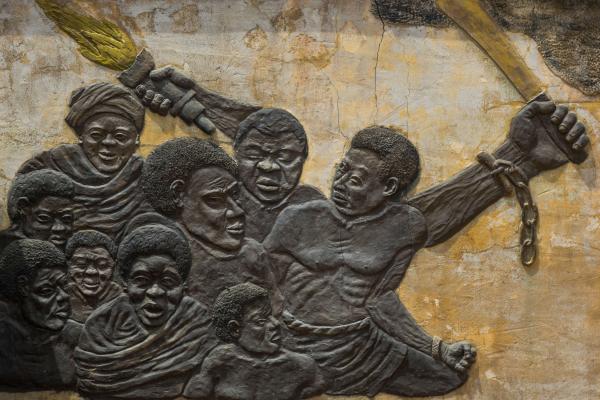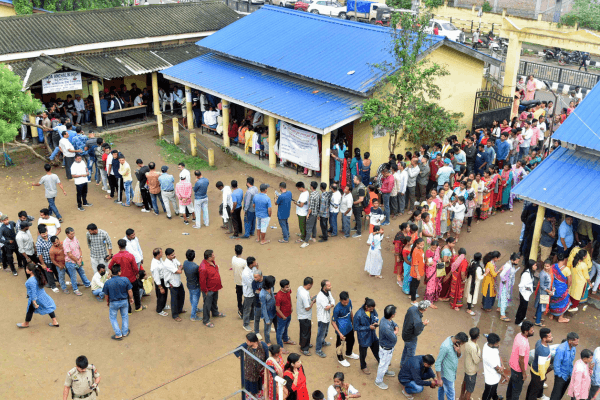I am not the first one to say this, and it is less prophetic than just observably true: Donald Trump is consistently putting his calculus of how he can win reelection over any commitment to protect the nation’s public health. The president clearly has no coherent strategy for addressing the COVID-19 pandemic, now surging again across the country, and it’s clear that the health and lives of the people of the United States matter much less to him than his own political fortunes. This shameful and alarming truth clarifies the stakes of this chaotic time. Trump’s latest political ploy is demanding the opening of all schools in the fall, threatening to pull funding from those that refuse. Just like he turned mask wearing into a political litmus test, he’s using our children’s futures as a political tactic to try and put the pandemic behind us, get the economy going again, and help him win reelection.
In the meantime, families are anxious to hear whether, when, and how schools will reopen, how to keep our kids, their teachers, and ourselves safe, and how in the world they can keep caring for and homeschooling their children while working full time. They can’t. And it’s because of a failure of leadership.
Donald Trump, along with Secretary of Education Betsy DeVos, have decided to weigh in as strongly as they can in favor of reopening schools across the country for full-time, in-person learning, despite the fact that cases of COVID-19 are surging across the South, and hospitalizations and deaths are rising again across the country. The American Academy of Pediatrics, just weeks after issuing a statement much touted by President Trump in support of as much in-person learning as possible this fall, reversed course this week, acknowledging that the decisions on whether to reopen schools must be guided by the health and scientific data on the spread of the virus in any given community.
Decisions on how to provide education and child care in the context of a global pandemic that has already killed more than 135,000 people in the United States are terribly complex and emotionally fraught. It’s been apparent for some time that there are no easy answers or quick fixes, and the widespread failure in the United States to lower the spread of the virus to levels that many European and Asian countries have now achieved only makes these personal decisions more wrenching.
A provocative New York Times article earlier this month, “In the COVID-19 Economy, You Can Have a Kid or a Job. You Can’t Have Both,” laid out the dilemmas faced by parents under distance learning or hybrid plans extremely well. These are the conversations I am hearing in my own community and around the country, including with our own staff at Sojourners — many of whom have young children and are feeling the “crush” and “untenable” pressures of work and family life under COVID-19.
... Without a doubt, reopening schools is a colossal undertaking. There are no easy solutions to finding enough space for students to socially distance, ensuring teachers and staff are protected, adding more sinks and cleaning staff, and implementing widespread temperature checks, testing and contact tracing.
But after nearly four months ... state governments don’t have any creative or even plausible solutions ... For parents who cannot simply sort it out, our national response feels more like a dystopian novel where only the wealthy get to limit their exposure and survive the pandemic unscathed. Allowing workplaces to reopen while schools, camps and day cares remain closed tells a generation of working parents that it’s fine if they lose their jobs, insurance and livelihoods in the process.
Of course, the many tangible and intangible costs of keeping schools fully or partially closed is only part of the equation. Because of the way our society is stratified by class and permeated by racist structures in almost every way, the fact that working people of color are among the most likely to need to be able to send their children to school in order to put food on the table collides viciously with the reality that working people of color are among the most likely to have health, living, or family conditions that put them and their loved ones at greater risk of severe illness or death if they contract COVID-19.
Forcing working people generally, and disproportionately people of color, to choose between their lives and their livelihoods has been a feature of this pandemic since its earliest days and is perhaps the pandemic’s most morally monstrous aspect — all the more so because other countries have shown that it is possible to simply pay most workers to stay home and businesses to stay closed until the virus is much more under control, as has happened in much of Europe. This strategy would also have been both more equitable and more effective in stopping the spread of the virus in the United States — but it wasn’t done effectively here.
As it has done with so many other facets of our society, COVID-19 is revealing all the inequities in our education systems in new and stark ways that expose the injustices that were already there. To give just one foundational example, the fact that public schools in the United States are so dependent on property taxes for their funding makes the whole enterprise fundamentally unequal right from the get go, as schools in wealthier areas invariably have bigger budgets to educate their children than those in poorer areas. Absent significant federal aid to every school district in the country, that inequity will be felt as some districts, with more or less resources, move toward reopening with school districts’ ability or lack thereof to modify their classrooms and other facilities to make them safer for students to attend school without accelerating the spread of the virus. Again, it is simply unconscionable that the classrooms where students, teachers, and families are at the highest risk of contracting COVID-19 will be disproportionately the same classrooms where demand is highest for in-person learning and where there will be the least funding for effective safeguards against the spread of the virus.
But Donald Trump and Betsy DeVos don’t appear to care about any of this. Again, recent reporting and even the most casual familiarity with the way the president appears to come to his decisions strongly suggests he believes pushing for schools to reopen could help his reelection chances by appealing to parents seeking some level of return to normal and reviving the battered economy by getting parents back into the workforce. The fact is that the nation’s chronically underpaid public school teachers and the families of the nation’s lowest income children are the ones whose lives are most at risk if schools reopen too soon or without adequate safeguards for either public health or necessary education.
The wealthy win again — as always in America — as they have the ability to afford child care and are much more able to provide their children with the highest quality remote education as long as necessary. And that is the reversal of biblical values and priorities in which the most vulnerable are to be among the first, not the last. It is time for the Congress to step up with the resources necessary for every school district to open in the safest ways possible. And it’s time for the churches to step up and provide the space and the volunteers to care for and help educate children whose parents will need to go back to work. And it’s time for Donald Trump to step down or away from the mess he has created and allow federal leadership to finally occur in the midst of what has become both a health and moral crisis.
Got something to say about what you're reading? We value your feedback!








